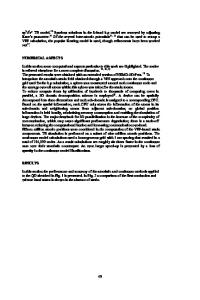Multiscale Modeling of Soils
This chapter presents the multiscale modeling methodology for soils from micro to macro. First, the multiscale feature of soils within the general framework of the multiscale approach to granular materials is presented. Then, the fundamentals of micromech
- PDF / 73,681,088 Bytes
- 417 Pages / 453.543 x 683.15 pts Page_size
- 113 Downloads / 334 Views
Practice of Constitutive Modelling for Saturated Soils
Practice of Constitutive Modelling for Saturated Soils
Zhen-Yu Yin Pierre-Yves Hicher Yin-Fu Jin •
•
Practice of Constitutive Modelling for Saturated Soils
123
Zhen-Yu Yin Department of Civil and Environmental Engineering The Hong Kong Polytechnic University Hong Kong, China
Pierre-Yves Hicher Research Institute in Civil and Mechanical Engineering UMR CNRS GeM Ecole Centrale de Nantes Nantes, France
Yin-Fu Jin Department of Civil and Environmental Engineering The Hong Kong Polytechnic University Hong Kong, China
ISBN 978-981-15-6306-5 ISBN 978-981-15-6307-2 https://doi.org/10.1007/978-981-15-6307-2
(eBook)
Jointly published with Tongji University Press The print edition is not for sale in China Mainland. Customers from China Mainland please order the print book from: Tongji University Press. © Springer Nature Singapore Pte Ltd. and Tongji University Press 2020 This work is subject to copyright. All rights are reserved by the Publishers, whether the whole or part of the material is concerned, specifically the rights of translation, reprinting, reuse of illustrations, recitation, broadcasting, reproduction on microfilms or in any other physical way, and transmission or information storage and retrieval, electronic adaptation, computer software, or by similar or dissimilar methodology now known or hereafter developed. The use of general descriptive names, registered names, trademarks, service marks, etc. in this publication does not imply, even in the absence of a specific statement, that such names are exempt from the relevant protective laws and regulations and therefore free for general use. The publishers, the authors, and the editors are safe to assume that the advice and information in this book are believed to be true and accurate at the date of publication. Neither the publishers nor the authors or the editors give a warranty, express or implied, with respect to the material contained herein or for any errors or omissions that may have been made. The publishers remain neutral with regard to jurisdictional claims in published maps and institutional affiliations. This Springer imprint is published by the registered company Springer Nature Singapore Pte Ltd. The registered company address is: 152 Beach Road, #21-01/04 Gateway East, Singapore 189721, Singapore
Foreword
Constitutive models are fundamental training for graduate students in geotechnical engineering. For a long time, however, these models have lacked a simple and easy-to-understand platform for learning, training and practice between the theory and practice of soil mechanics and geotechnical engineering. Many engineers and practitioners, and even some researchers, have reservations about this topic. There is a mismatch between research and application. Especially in recent years, constitutive models aiming at refined simulations have been continuously developed, with increasing complexity and parameters. In addition, difficulties in parameter calibration have given rise to barriers to t











